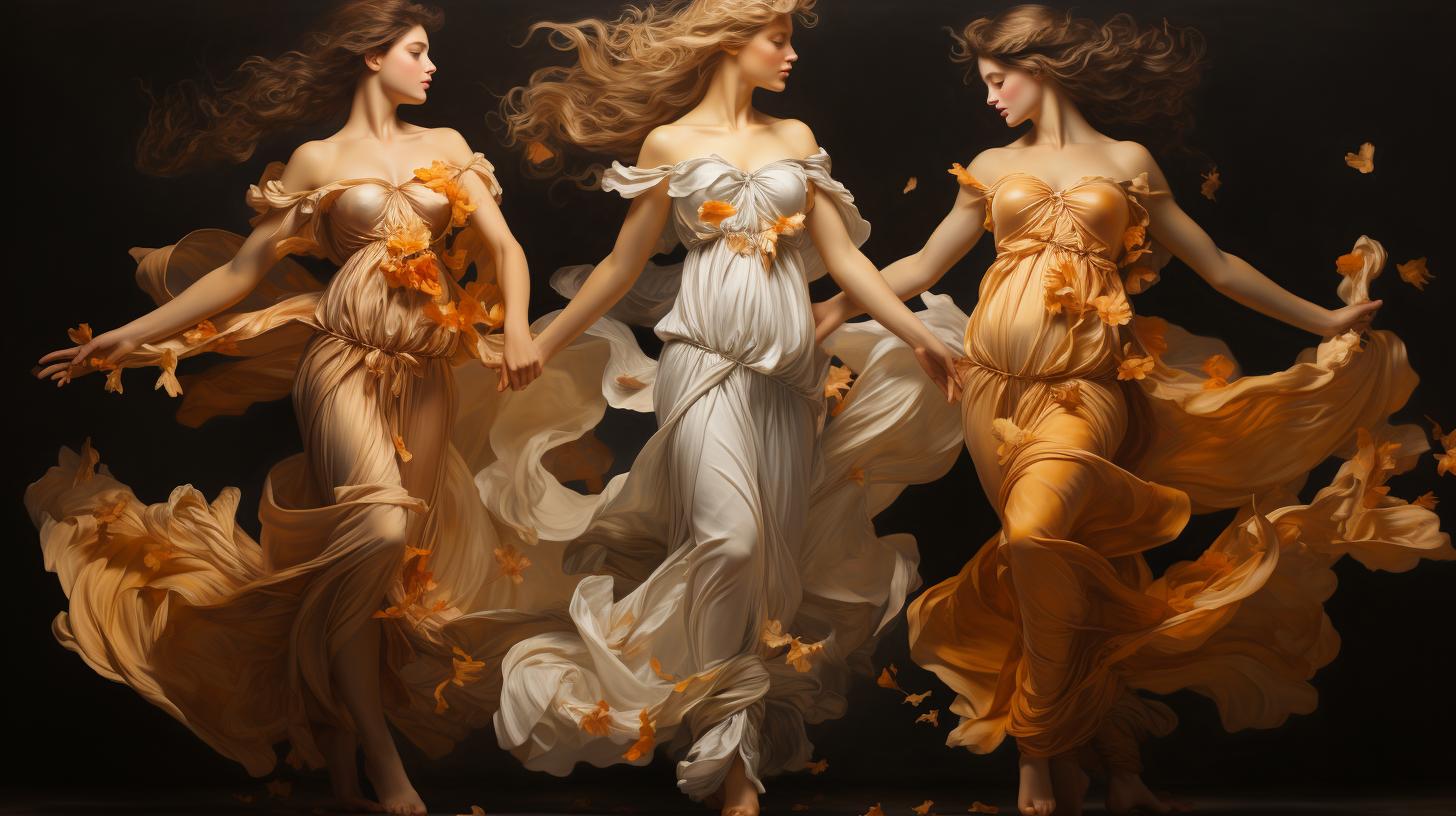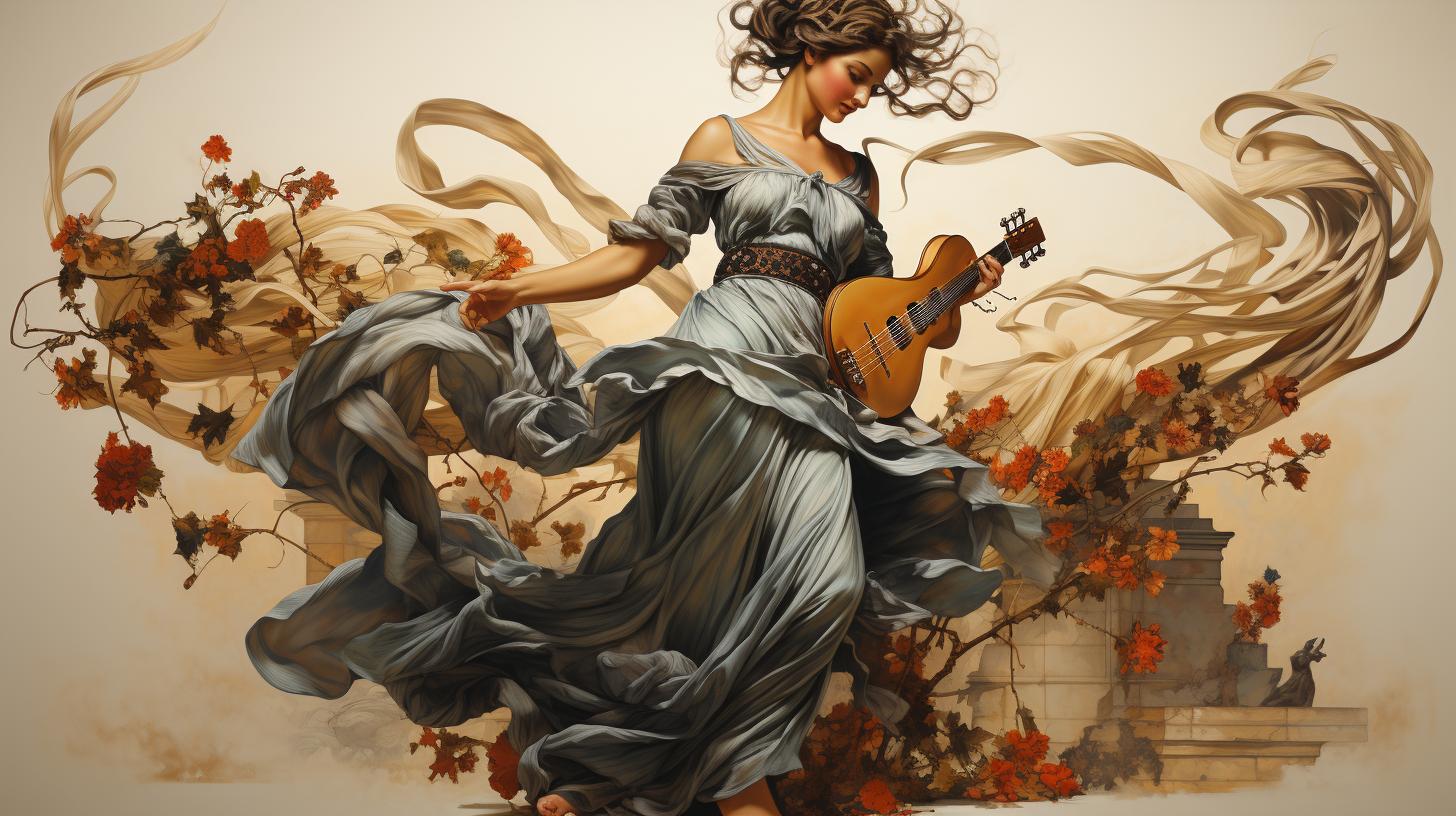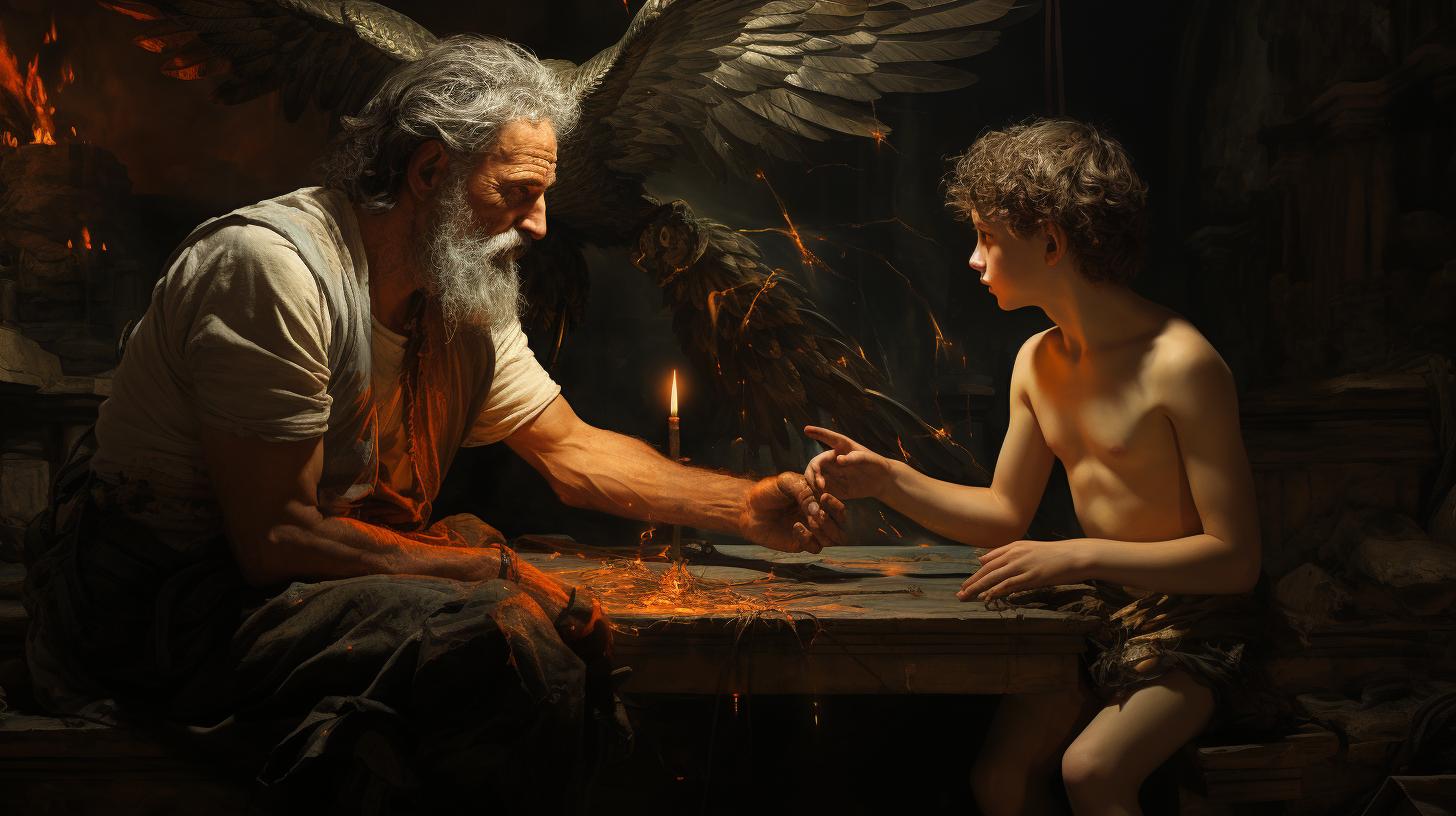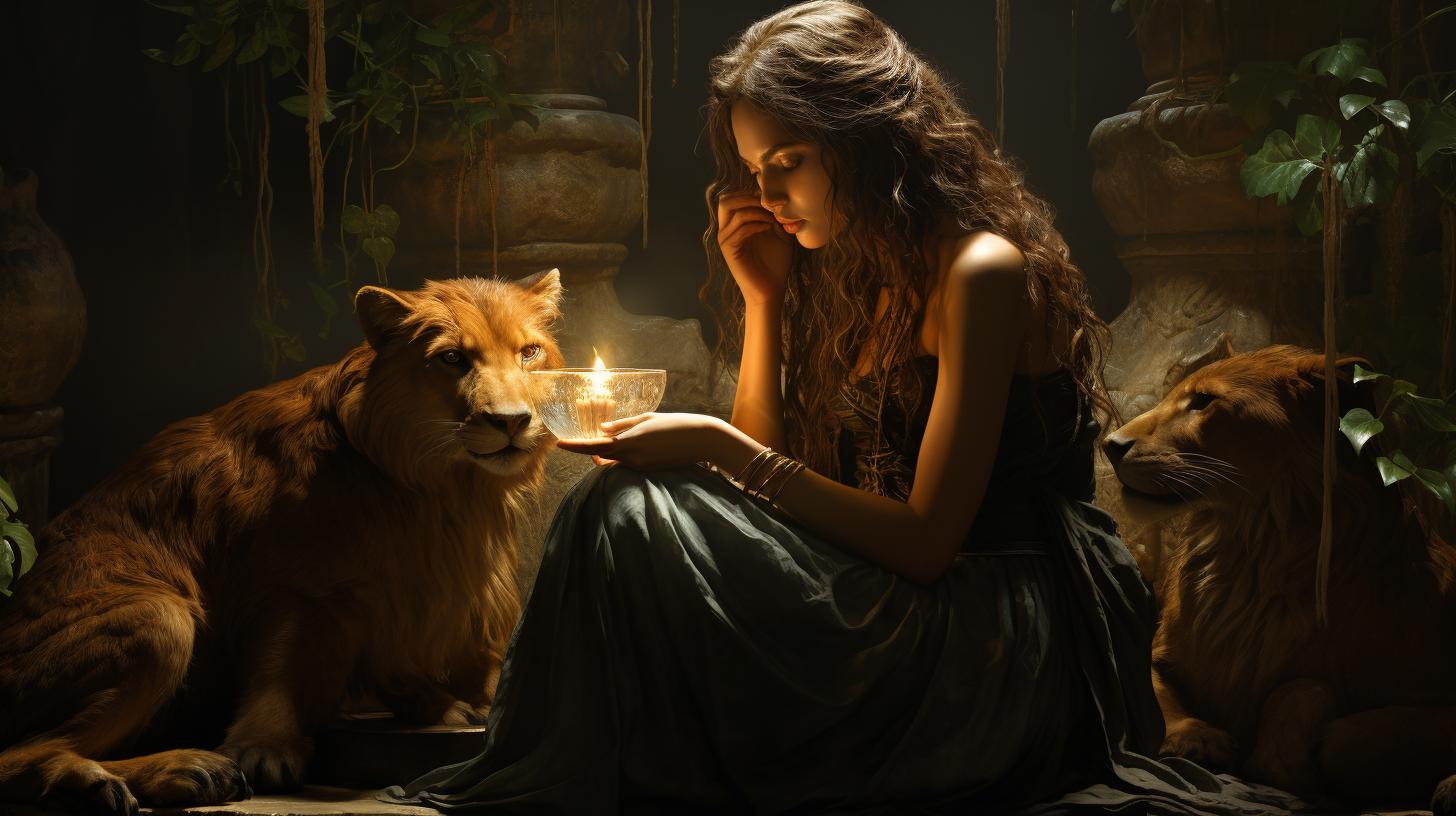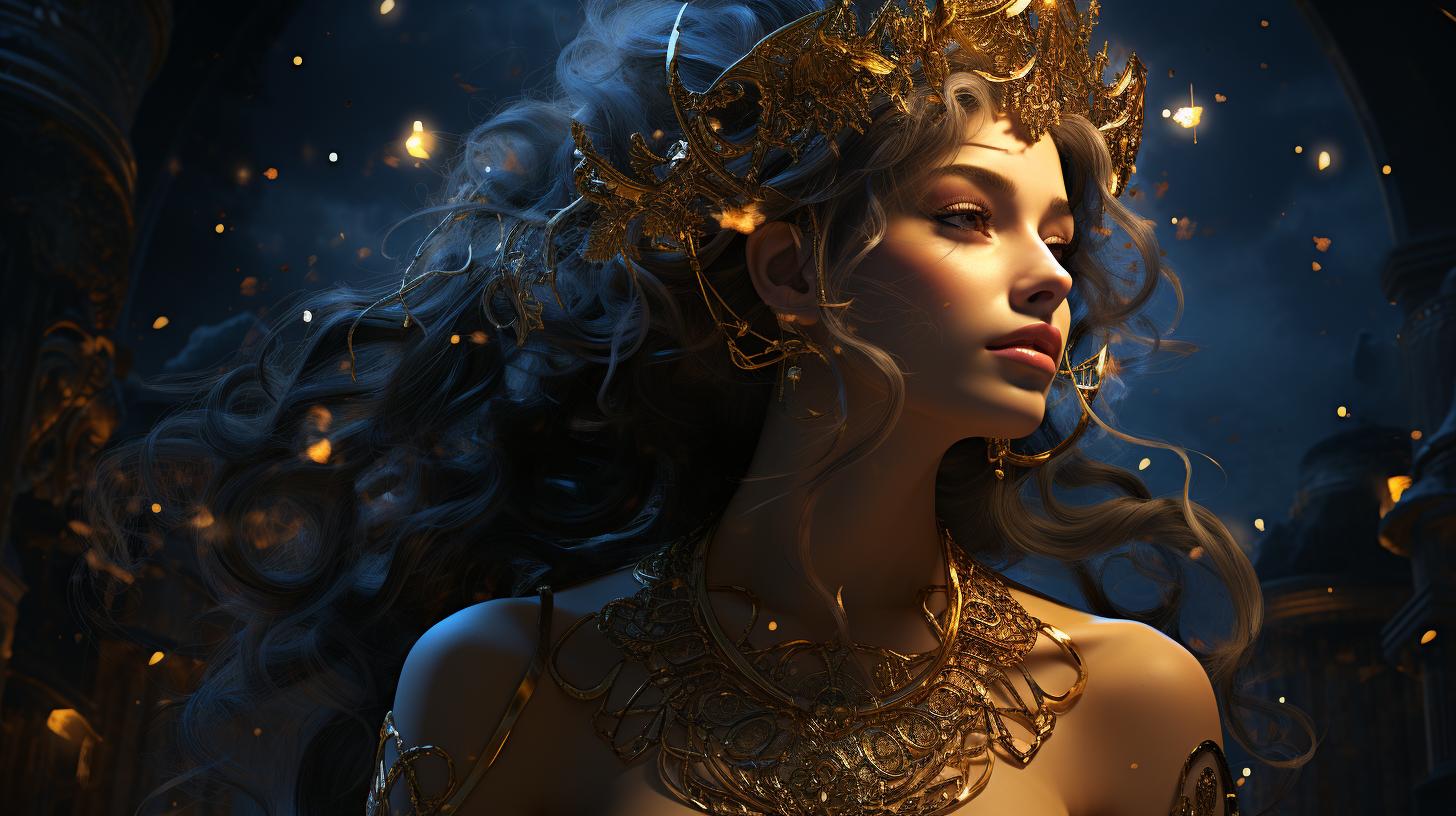The Three Graces in Greek Mythology: Unveiling Their Beauty, Grace, and Influence
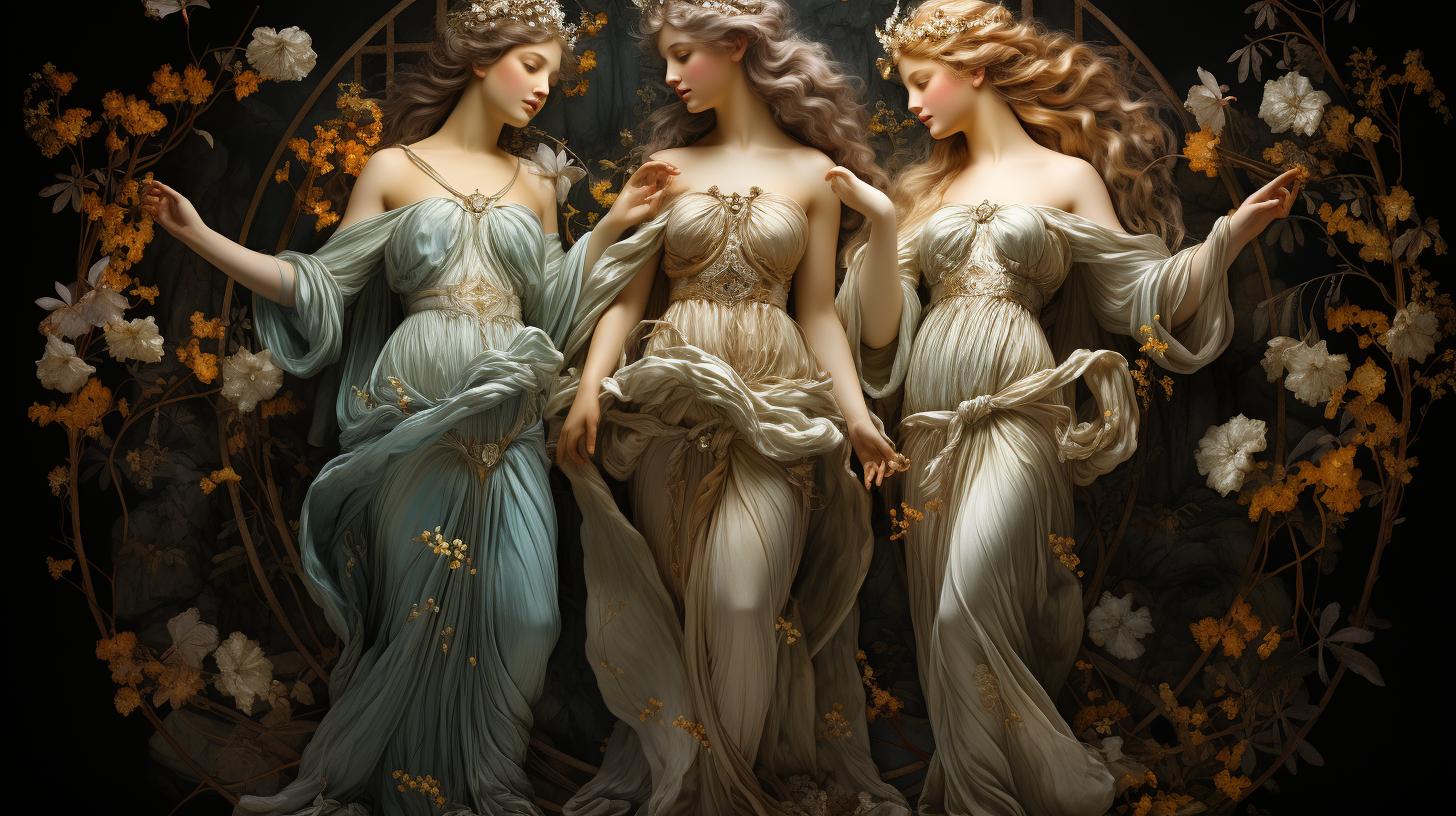
The Three Graces in Greek Mythology are divine beings associated with beauty, nature, human creativity, kindness, and fertility. Believed to be the daughters of Zeus and Hera, or Eurynome, each Grace represents specific qualities.
Aglaea embodies beauty and splendor, Euphrosyne symbolizes joy and good humor, and Thalia represents youth and beauty. These goddesses accompanied the Olympian gods, particularly close to Aphrodite, the goddess of love, and Hermes, the god of fertility and messenger.
Known for their ability to inspire artists and poets, the Graces were often depicted in art, inspiring notable works by artists like Raphael and Botticelli.
The Origins and Genealogy of the Three Graces
The Three Graces in Greek mythology have captivating origins deeply rooted in the genealogy of the gods.
Let’s delve into their fascinating parentage and explore the different names and qualities attributed to them.
The Parentage of the Three Graces
The progenitors of the Three Graces are none other than Zeus, the supreme ruler of the gods, and Hera, the goddess of marriage and childbirth. Some accounts also attribute their parentage to Eurynome, a Titaness associated with water and motherhood.
The Different Names and Qualities of the Three Graces
Each of the Three Graces possesses distinct names and embodies specific qualities, symbolizing the richness and diversity of their divine attributes.
- Aglaea: Known as the epitome of beauty and splendor, Aglaea’s name signifies radiance and allure.
She captivates all with her enchanting presence.
- Euphrosyne: Euphrosyne represents joy and good humor, brightening the lives of those around her with her infectious laughter and uplifting spirit.
- Thalia: Thalia personifies youth and beauty, radiating a vibrant energy that embodies the essence of vitality and charm.
Together, these three goddesses create a harmonious trio, each contributing their unique qualities to the world of Greek mythology.
The Role and Attributes of the Three Graces
In Greek mythology, the Three Graces, also known as the Charites, play significant roles representing various qualities. Each Grace possesses unique attributes that contribute to their collective beauty, joy, and youthfulness.
Let’s explore the exquisite characteristics of Aglaea, Euphrosyne, and Thalia.
The Association with Beauty and Splendor – Aglaea
Aglaea, one of the Three Graces, embodies beauty and splendor. She radiates elegance and is recognized for her enchanting allure. Aglaea’s presence illuminates any gathering or event, captivating all who behold her.
Her gracefulness and charm inspire admiration and appreciation of the exquisite aesthetics found in the natural and human realms.
The Symbolism of Joy and Good Humor – Euphrosyne
Euphrosyne symbolizes joy and good humor. Her infectious laughter uplifts spirits and brings happiness to those around her. Euphrosyne’s playful nature and lightheartedness serve as a reminder to embrace mirth and find delight in life’s simple pleasures.
Her presence infuses gatherings with a vibrant and jovial atmosphere, allowing individuals to revel in moments of pure bliss.
The Representation of Youth and Beauty – Thalia
Thalia represents youth and beauty, encapsulating the essence of blossoming vitality and allure. As one of the Three Graces, she epitomizes the radiance and charm associated with youthfulness. Thalia’s presence evokes a sense of rejuvenation and reminds us of the ever-changing and cyclical nature of life.
Her vibrant spirit and youthful energy inspire creativity and celebration of the bountiful beauty that surrounds us.
The Companionship of the Three Graces
The Three Graces, being integral members of the Greek pantheon, had close connections with various gods and goddesses, particularly Aphrodite, the goddess of love, and Hermes, the deity associated with fertility and messaging.
Their companionship and interactions with these renowned deities further elevated their significance and influence.
The Connections with Aphrodite and Hermes
The bond between the Three Graces and Aphrodite was particularly strong, as they often accompanied her in joyous festivities and revelries. Together, they formed a harmonious trio, radiating beauty, grace, and charm.
Their friendship with Aphrodite exemplified their role in enhancing the goddess’s allure and charisma, as well as their association with love and desire.
Additionally, the Three Graces shared a special rapport with Hermes, the messenger of the gods.
Hermes, being the god of fertility and the facilitator of communication, perfectly complemented the essence of the Graces. Their connection with Hermes symbolized their influence in promoting fertility, creativity, and the transmission of artistic inspiration.
The Contribution to Aphrodite’s Attire and Pandora’s Charm
Within the realm of Greek mythology, the Three Graces played a significant role in adorning Aphrodite, often weaving and dyeing her garments, elevating her beauty to unparalleled heights. Their skillful craftsmanship and attention to detail added an extra layer of radiance to the goddess of love.
Moreover, the Three Graces bestowed Pandora, the first woman on Earth, with exquisite necklaces to enhance her allure and charm. This gesture demonstrates their association not only with physical beauty but also with the power of captivating others through charisma and grace.
Thus, the companionship of the Three Graces with prominent deities like Aphrodite and Hermes exemplifies their vital role as enhance1rs of beauty and facilitators of joy and love in Greek mythology.
The Depiction of the Three Graces in Art
Artistic representations of the Three Graces have played a significant role throughout history, capturing their beauty, grace, and influence in various art forms. Let’s explore the classical representation of the Graces, their inspirations for artists and poets, as well as notable artworks featuring these divine beings.
The Classical Representation of the Graces
In classical art, the Three Graces were often depicted as nude or clothed women, gracefully intertwined and dancing in a circle. This portrayal symbolizes their unity, harmony, and everlasting bond. Artists sought to capture their elegance and charm, portraying them with soft, flowing drapery that accentuated their feminine features.
The artistic representation aimed to convey the Graces’ enchanting presence and the joy they brought to the world.
Inspirations for Artists and Poets
The allure of the Three Graces inspired countless artists and poets throughout the ages. Their divine beauty and the qualities they embodied served as a muse for creativity. Artists were captivated by their elegance and sought to immortalize their gracefulness in their works.
Poets, on the other hand, found inspiration in the Graces’ association with joy, beauty, and creativity. Their verses celebrated the essence of these goddesses, infusing their words with a sense of enchantment and divine presence.
Notable Artworks Featuring the Three Graces
The Three Graces have been immortalized in numerous notable artworks over the centuries, affirming their cultural significance and enduring appeal. Renowned artists like Raphael and Botticelli captured the essence of the Graces in their celebrated paintings, showcasing their beauty and grace.
These artworks continue to be admired, providing a glimpse into the captivating world of Greek mythology and the ethereal presence of the Three Graces.
- Raphael’s “The Three Graces” – This masterpiece portrays the Graces in a celestial setting, entwined in a loving embrace.
Their ethereal beauty and harmony are brilliantly captured in this iconic painting.
- Botticelli’s “Primavera” – Within this renowned Renaissance artwork, the Three Graces are depicted alongside other mythological figures, symbolizing the arrival of spring and the rebirth of nature.
Their presence adds an enchanting touch to the composition.
- Other notable artworks – Various artists throughout history have rendered their interpretations of the Three Graces, each imbuing their own unique style and perspective into these divine beings.
Their depictions continue to evoke a sense of awe and fascination among art enthusiasts.
The Three Graces’ portrayal in art not only showcases their aesthetic appeal but also highlights their enduring influence in inspiring and captivating audiences across different periods and artistic movements.
The Sculpture of the Three Graces by Antonio Canova
The Three Graces in Greek Mythology, Aglaea, Euphrosyne, and Thalia, have been immortalized in various art forms, including the renowned sculpture created by Antonio Canova. This exquisite masterpiece captures the graceful essence of the Graces, showcasing their ethereal beauty and divine presence.
The Original Commission and Acquisition
Originally commissioned by Joséphine de Beauharnais, this mesmerizing sculpture was intended to adorn her opulent residence. However, following her death, the sculpture caught the attention of the Duke of Bedford, who acquired it for his own collection.
The sculpture, crafted from exquisite white marble, became a prized possession at the Duke’s household after its completion in 1817.
Canova’s Second Version of the Sculpture
In addition to the original commission, Antonio Canova embarked on creating a second version of the Three Graces sculpture. This subsequent rendition featured some alterations and modifications, further enhancing the embodiment of their elegance and allure.
Both versions of the sculpture serve as testaments to Canova’s exceptional talent and his ability to capture the essence of these mythical goddesses.
With masterful craftsmanship and intricate attention to detail, Canova brought the Three Graces to life in his sculptures, immortalizing their beauty for generations to admire and appreciate.
These captivating representations of the Graces continue to inspire awe and admiration, showcasing the enduring allure and significance of Greek mythology in the world of art.
The Three Graces in Mythological Context
In Greek mythology, the Three Graces hold a special place, not only for their association with beauty, nature, and creativity but also for their connections with other significant figures in Greek pantheon.
Understanding their role in mythological context provides deeper insights into their cultural significance.
The Association with the Muses
The Three Graces were closely associated with the Muses, the nine goddesses of inspiration who presided over various arts and sciences. These divine beings were believed to inspire poets, musicians, and artists alike, nurturing creativity and guiding the imaginative process.
As companions of the Muses, the Graces shared their sphere of influence and played an integral role in inspiring artistic endeavors. Through their grace, charm, and elegance, they inspired artists to capture their beauty and spread creativity in various forms of art such as sculpture, painting, and poetry.
The Moderation of Wine’s Exciting Influence
Another significant aspect of the Three Graces’ mythological context is their role in moderating the influence of wine. In Greek mythology, wine was associated with Dionysus, the god of wine and revelry.
While wine could bring excitement and ecstasy, it could also lead to excess and chaos.
The Graces, with their inherent harmony and balance, were believed to possess the ability to temper the intoxicating effects of wine.
Their presence at banquets and festivities brought a sense of moderation and control, ensuring that the celebrations remained joyful and harmonious.
By channeling their grace and moderation, the Three Graces imparted a sense of elegance and refinement to the Greek culture, reminding individuals of the importance of balance in life’s pleasures.
Thus, in mythological context, the Three Graces not only symbolized beauty and creativity but also acted as a source of inspiration for artists and played a vital role in maintaining harmony and moderation in the Greek world.
The Legacy and Influence of the Three Graces
Connections to Greek and Roman Biographies
The Three Graces, as prominent figures in Greek mythology, have left a lasting mark on the cultural and literary traditions of both ancient Greece and Rome. Their significance can be seen in various biographical accounts and works.
In Greek biographies, the Graces often make appearances in the stories of gods, mortals, and heroes, showcasing their essential role in shaping the narrative.
The Roman adaptations of Greek mythology also embrace the Three Graces, incorporating them into their own folklore and accounts.
Their presence in Roman literature further solidifies their relevance and enduring influence, as they become integral elements in the tales of Roman deities and historical figures.
The Three Graces in Literature and Mythological References
Throughout history, the Three Graces have been repeatedly referenced and celebrated in literary works inspired by Greek mythology.
Authors and poets draw inspiration from their profound qualities, intertwining their grace, beauty, and creativity into their stories and verses.
From ancient writers such as Homer, who mentioned the Graces in his epic poems, to influential literary figures like William Shakespeare, who weaved their essence into his plays, the Three Graces have become emblematic symbols of beauty, elegance, and artistic inspiration.
Notable References:
- In Homer’s works, the Graces are invoked in prayers, emphasizing their importance in Greek religiosity and culture.
- William Shakespeare alludes to the Graces in his plays, attributing their influence to the charm and allure of his characters.
- John Milton, in his epic poem “Paradise Lost,” draws on elements of Greek mythology, including the Three Graces, to enhance his narrative.
- Modern authors, such as Margaret Atwood and Neil Gaiman, continue to pay homage to the Three Graces in their literary creations, celebrating their timeless appeal.
These references and allusions demonstrate that the Three Graces remain an enduring source of inspiration for writers across different time periods, showcasing their profound impact on the literary landscape.
Their legacy continues to fascinate and captivate readers, perpetuating their influential presence within the realm of literature and mythological references.
Exploring the Three Graces in Ancient Greek Culture
The Three Graces, also known as the Charites, hold a significant place in ancient Greek culture. Their presence can be observed in various aspects of Greek art, sculptures, and collections, shedding light on their enduring cultural significance and interpretations.
The Three Graces in Ancient Sculptures and Collections
- The depiction of the Three Graces in ancient sculptures showcases the timeless fascination with their beauty and grace. These sculptures often portray them in intricate poses, with intertwined arms and flowing drapery, symbolizing their harmonious nature.
- Among the notable ancient sculptures featuring the Three Graces is the marble statue by Antonio Canova.
This masterpiece captures their elegance and charm, emphasizing their divine attributes in the realm of art.
- Ancient Greek collections house numerous artifacts that highlight the enduring cultural importance of the Three Graces.
These collections include vases, pottery, and reliefs, showcasing the lasting influence these goddesses had on ancient Greek society.
Cultural Significance and Interpretations
The presence of the Three Graces in ancient Greek culture holds deep cultural significance and has been subject to various interpretations throughout history. They embody the ideals of beauty, harmony, and creativity, serving as a source of inspiration to artists, writers, and thinkers.
The Three Graces, with their close association with the Muses, symbolize the connection between art and beauty. Their presence in artistic endeavors reflects the belief that creativity and beauty are intertwined, serving as a muse for artistic expression.
Moreover, the Three Graces’ depiction in ancient Greek culture reveals the Greek’s fascination with the concepts of charm, elegance, and the pursuit of balance. They epitomize the values and aspirations of Greek society, emphasizing the importance of grace, joy, and the celebration of life.
In conclusion, exploring the Three Graces in ancient Greek culture unveils their indelible impact on art, sculptures, and collections. Their representation in ancient artworks and their cultural significance highlight their enduring legacy as divine beings associated with beauty, harmony, and creativity.
.











